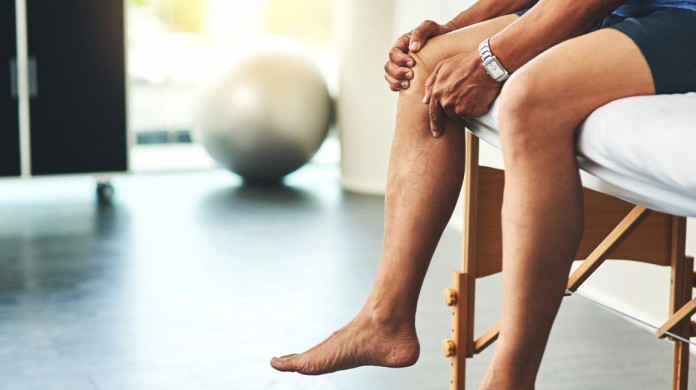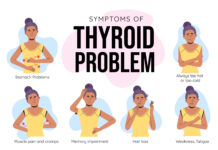With the mercury dropping down and the temperatures turned low, it marks the beginning of hot beverages, warm clothes, cosy beds, lazy days in the blanket, some cold and cough, and revival of joint pains. In the cold weather, joints are likely to pain more than they usually do. This occurs more so for people with arthritis or those who happen to have a precursor to arthritis. Many people complain of stiff joints during cold weather particularly when they first make a movement.

Important Announcement – EasyShiksha has now started Online Internship Program “Ab India Sikhega Ghar Se”

Top Courses in Virtual Reality
More Courses With Certification
The winter weather makes the muscles lose more heat and contract which creates a tightness through the body. Hence, ligaments and joints get stiffer, muscles lose their range of motion and nerves can be easily compressed especially in elderly people or those with injuries specifically under the belt area. The temperature dip forces the muscles to work harder, leading to some damage to the muscle tissue and increased soreness. Experts also explain that when the weather is cold, the body usually conserves heat and sends more blood to the organs in the center of the body like the heart or the lungs. This makes the blood vessels of the arms, legs, shoulders, and knee joints to tighten. The reduced blood flow further makes the joints cold and stiff, leading to pain and discomfort. Some also say that when the weather is cold or damp, barometric pressure changes causing an inflammatory response in the joints, due to changes in blood circulation and nerve fiber sensitivity.
The pain is most likely to occur in weight-bearing joints and the major joints of the body like the knees, hips, and ankles. The people who run more in the outside cold weather also get more affected.
Top Courses in Software Engineering
Top Courses in Software Engineering
Some factors that lead to joint pains during cold weather include:
·Lesser the temperature, more the hard work put in by the muscles and more the pain.
·Alteration in the barometric pressure which can make the body tissue expand and increase the stress on the joints.
·Sensitivity also increases during cold and so more pain especially if a person suffers from rheumatoid arthritis.
·Reduced physical activity and decreased exercise which leads to muscle stiffness.
·Joints also tend to have less elasticity in the cold but when warmed up, they stretch better.
RELIEVING THE COLD WEATHER JOINT PAIN
While experiencing stiffness and pain during winters is an extremely common occurrence, it is not very difficult to avoid it. The basic is to keep yourself warm, not just by lying inside a blanket but also by sufficient physical activity. Some ways of keeping yourself warm to avoid joint pains could be:
Top Courses in Quality Management System
Top Courses in Project Management
·Before you set out for exercising in the cold, you must do a proper warm-up and stretch which is generally longer than the warm-up you do in summer temperatures. This will open up your muscles, make them more flexible before you get exercising and prevent further stiffness as well.
·Even during pauses or breaks in your run or during your exercise routine, ensure to implement dynamic movements to keep yourself warm and agile otherwise your joints and muscles can begin to feel stiff during those breaks as the body temperature goes down.
·Not just warm-up, a proper cool down to let your body experience the correct intensity is equally important. This also aids the reduction of tightening in the muscles which might occur after exercising.
·If the weather is extremely chilly, avoid stepping out for a run or exercise. Alternatively consider exercising indoor but do not skip it, even if you do it for a lesser duration. Staying active is essential for better functioning of the muscles and joints. After a long duration of no activity, the soreness or pain tends to be more during that first movement you do but if you continue the movement, the muscles warm-up and won’t bind up so much. Exercising also improves the flow of blood and oxygen throughout the body.
·If you still experience joint pain, despite a proper warm-up and cool-down inclusive exercising, visit an orthopedist or physical therapist to ensure there is no injury. Pain is not always a result of an injury; it could even be vice-versa where joint pain can lead to injuries. Not just that if stiffness of muscles is left unaddressed then that can cause injury too and worsen the situation.
 Online Courses with Certification
Online Courses with CertificationTop Courses in Personal Development
·Dress-up in layers and keep your body warm, protecting your skin and joints from outdoor cold exposure.
·The often-missed point in the tightness of the muscles (especially in the upper body) is our posture. Instead of scrunching up over a period of time and further stiffening the muscles, it is important to lengthen your entire body, pulling it up, elongating your back, getting your shoulders down, and maintain a better posture. Doing shoulder rolls, neck rolls, and arm rolls while working long hours sitting also helps.
·If someone is an arthritic patient, then they are likely to experience more weakness, hence reduce movement and so more soreness. They must work to strengthen their arthritic or stiff joints even before winter arrives and constantly work on them.
Empower your team. Lead the industry
Get a subscription to a library of online courses and digital learning tools for your organization with EasyShiksha
Request NowQ. Are EasyShiksha's internships truly free?
Yes, all internships offered by EasyShiksha are completely free of charge.
Q. How can I apply for an internship with EasyShiksha?
You can apply by visiting our website, browsing available internships, and following the application instructions provided.
Q. What types of internships are available through EasyShiksha?
EasyShiksha offers a wide range of internships across technology, business, marketing, healthcare, and more. Opportunities are continuously updated.
Q. Will I receive a certificate upon completing an internship?
Yes, upon successful completion, you will receive a certificate recognizing your participation and achievements.
Q. Are EasyShiksha's internship certificates recognized by universities and employers?
Yes, the certificates are recognized by universities, colleges, and employers worldwide.
Q. Is the download of certificates free or paid?
Access to internships and courses is free, but there is a small fee to download certificates, covering administrative costs.
Q. When can I start the course?
You can choose any course and start immediately without delay.
Q. What are the course and session timings?
These are fully online courses. You can learn at any time and pace. We recommend following a routine, but it depends on your schedule.
Q. What will happen when my course is over?
After completion, you will have lifetime access to the course for future reference.
Q. Can I download the notes and study material?
Yes, you can access and download course materials and have lifetime access for future reference.
Q. What software/tools would be needed for the course?
All necessary software/tools will be shared during the training as needed.
Q. I’m unable to make a payment. What should I do?
Try using a different card or account. If the problem persists, email us at info@easyshiksha.com.
Q. Do I get the certificate in hard copy?
No, only a soft copy is provided, which can be downloaded and printed if required.
Q. The payment got deducted but shows “failed”. What to do?
Technical errors may cause this. The deducted amount will be returned to your account in 7-10 working days.
Q. Payment was successful but dashboard shows ‘Buy Now’?
Sometimes payment reflection is delayed. If it takes longer than 30 minutes, email info@easyshiksha.com with the payment screenshot.
Q. What is the refund policy?
If you face technical issues, you can request a refund. No refunds are issued once the certificate has been generated.
Q. Can I enroll in a single course?
Yes, select the course of interest, fill in the details, make payment, and start learning. You will also earn a certificate.
Q. My questions are not listed above. I need further help.
Contact us at info@easyshiksha.com for further assistance.
ALSO READ: dhvani bhanushali new song na ja tu released
Get Course: What is PSI DSS Certification Course



















































































